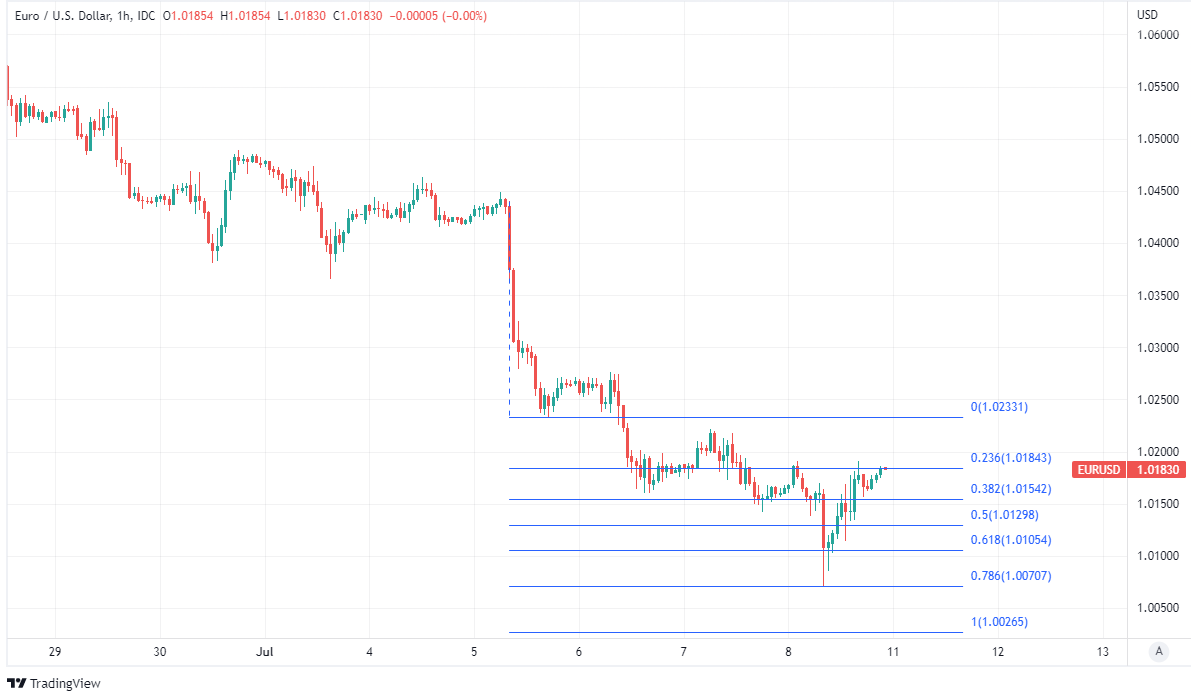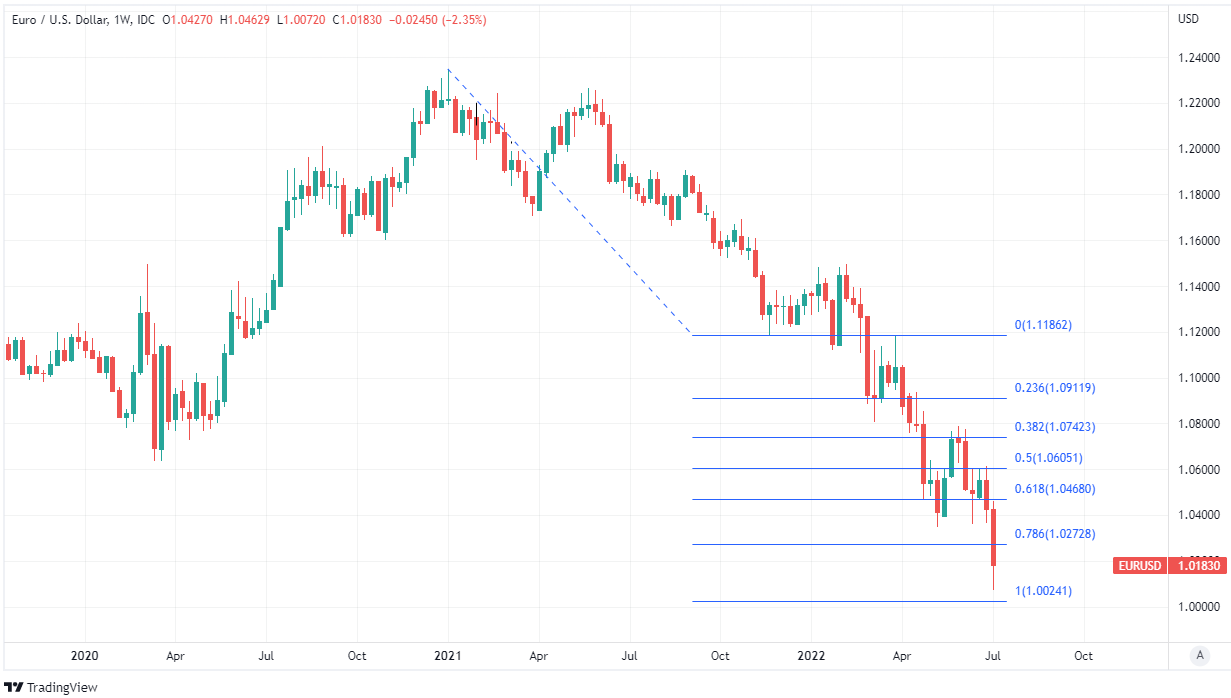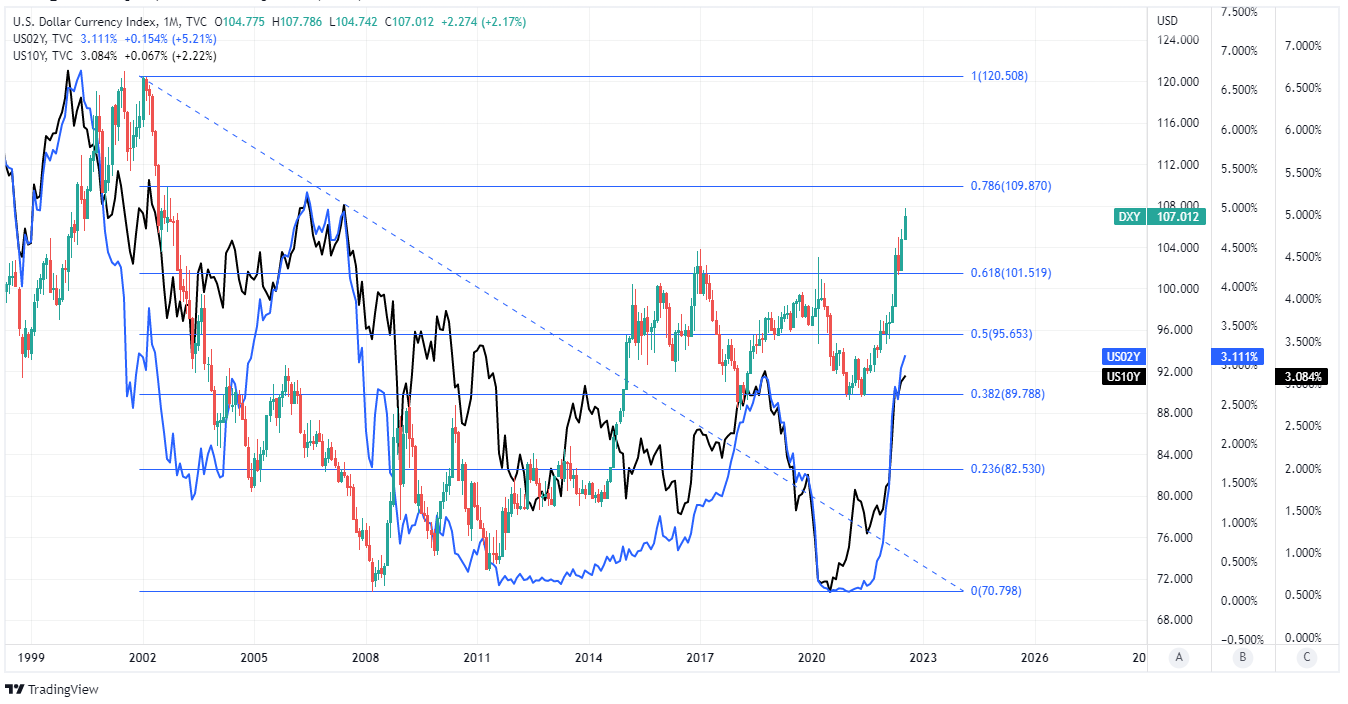EUR/USD Week Ahead Forecast: Looking to Defy Gravity Above 1.0020
- Written by: James Skinner
-

Image © European Commission Audiovisual Services
The Euro to Dollar rate tumbled heavily last week before coming within a whisker of parity but it rallied smartly in time for the weekend close and could now be set to defy gravity by trading buoyantly above a tentative bottom around roughly the 1.0020 level in the days ahead.
Europe’s single currency came close to the psychologically important milestone that is parity with the Dollar on Friday but actually ended the final session of the week higher after rallying following contact with another noteworthy technical level early during the European morning.
“It now appears only a matter of time before EUR/USD falls back below parity. The main driver for EUR weakness continues to be building concerns over greater disruption for European economies from tightening energy supplies,” warns Lee Hardman, a currency analyst at MUFG.
“In these circumstances, we expect the EUR’s bearish trend to remain in place. EUR weakness could even accelerate when EUR/USD breaks below parity, and opens the door for EUR/USD to trade between 0.9500 and 1.0000,” Hardman and colleagues also warned on Friday.
The Euro to Dollar rate traded as low as 1.0070 last week, which is a level that coincides closely with the 78.6% Fibonacci extension of last Tuesday's big lurch lower and appeared to prompt an immediate bid from the market that may be noteworthy for other reasons too.
 Above: EUR/USD at hourly intervals with Fibonacci extensions of Tuesday slump indicating prospective pivot points. Click image for closer inspection.
Above: EUR/USD at hourly intervals with Fibonacci extensions of Tuesday slump indicating prospective pivot points. Click image for closer inspection.
This 78.6% Fibonacci extension also itself coincides closely with a 100% extrapolation of the January 2021 to November 2021 downtrend while Friday's rally left behind in its wake on charts what may be something like a "dragonfly doji" or "hammer" candlestick reversal pattern.
To the extent that any of the above indicates that a tentative bottom has been struck the single currency would be in with a shot at stabilising without any further brush with parity in the days ahead, although analysts do generally remain bearish in their outlooks for the Euro.
“EURUSD came perilously close to hitting parity; and while we would expect that to offer some natural defense (particularly in the options space), the macro headwinds are immense in Europe and the balance of payments is experiencing an epic deterioration that is likely to continue. And without a EUR offset, the USD remains king,” says Mazen Issa, a senior FX strategist at TD Securities.
“Every data point will get a lot of scrutiny and continue the hemming and hawing of market speculators. We would concede that the shock value of the data and even tightening has certainly reduced, but we are cautious on holding risk positive positions into the upcoming inflation and Fed CIE releases, both of which are likely to be rather strong,” Issa also said in a Friday research briefing.
The week ahead calendar is devoid of major appointments for the Euro but market appetite for it and the Dollar is likely to be sensitive to the outcome and implications of Wednesday’s U.S. inflation data for June as well as a range of other American economic numbers.
 Above: EUR/USD at weekly intervals with Fibonacci extensions of January to November 2021 slide indicating prospective pivot points. Click image for closer inspection.
Above: EUR/USD at weekly intervals with Fibonacci extensions of January to November 2021 slide indicating prospective pivot points. Click image for closer inspection.
“Without any important economic data or speeches in the week ahead, EUR/USD is likely to take direction from the USD. The next downside support level is 1.00,” says Joseph Capurso, head of international economics at Commonwealth Bank of Australia.
“We consider the market is under-estimating the ‘stickiness’ of inflation and the FOMC’s resolve to get inflation down even if recession risks lift materially. A fall in the USD caused by a downside surprise to retail sales is likely to be short-lived in our view (Friday),” Capurso and colleagues also said.
While the market remains bearish on the Euro, it may be relevant that the Dollar did not make much of the brief rally that followed on Friday when June’s non-farm payrolls report emerged much stronger than was expected.
It also made little headway when last Wednesday’s Institute for Supply Management (ISM) Services PMI added to the numerous recent indications that fears of a U.S. recession may have already reached a crescendo.
Meanwhile, the Dollar has been unable to sustain for long at any one period of time, the erratic strength that continues to characterise its advance against many currencies.
 Above: U.S. Dollar Index at monthly intervals with Fibonacci retracements of 2002 downtrend indicating long-term resistances while featured alongside 02-year and 10-year U.S. government bond yields. Click image for closer inspection.
Above: U.S. Dollar Index at monthly intervals with Fibonacci retracements of 2002 downtrend indicating long-term resistances while featured alongside 02-year and 10-year U.S. government bond yields. Click image for closer inspection.











